The M3 MacBook Pros are here, and Apple has once again blown its rivals out of the water with its new 3nm chips, which look like another paradigm shift in computing. However, this raises a question: Should you upgrade to the latest M3 MacBook Pro from last year’s model? Let’s find out in this detailed comparison of the M3 MacBook Pro vs. M2 MacBook Pro.
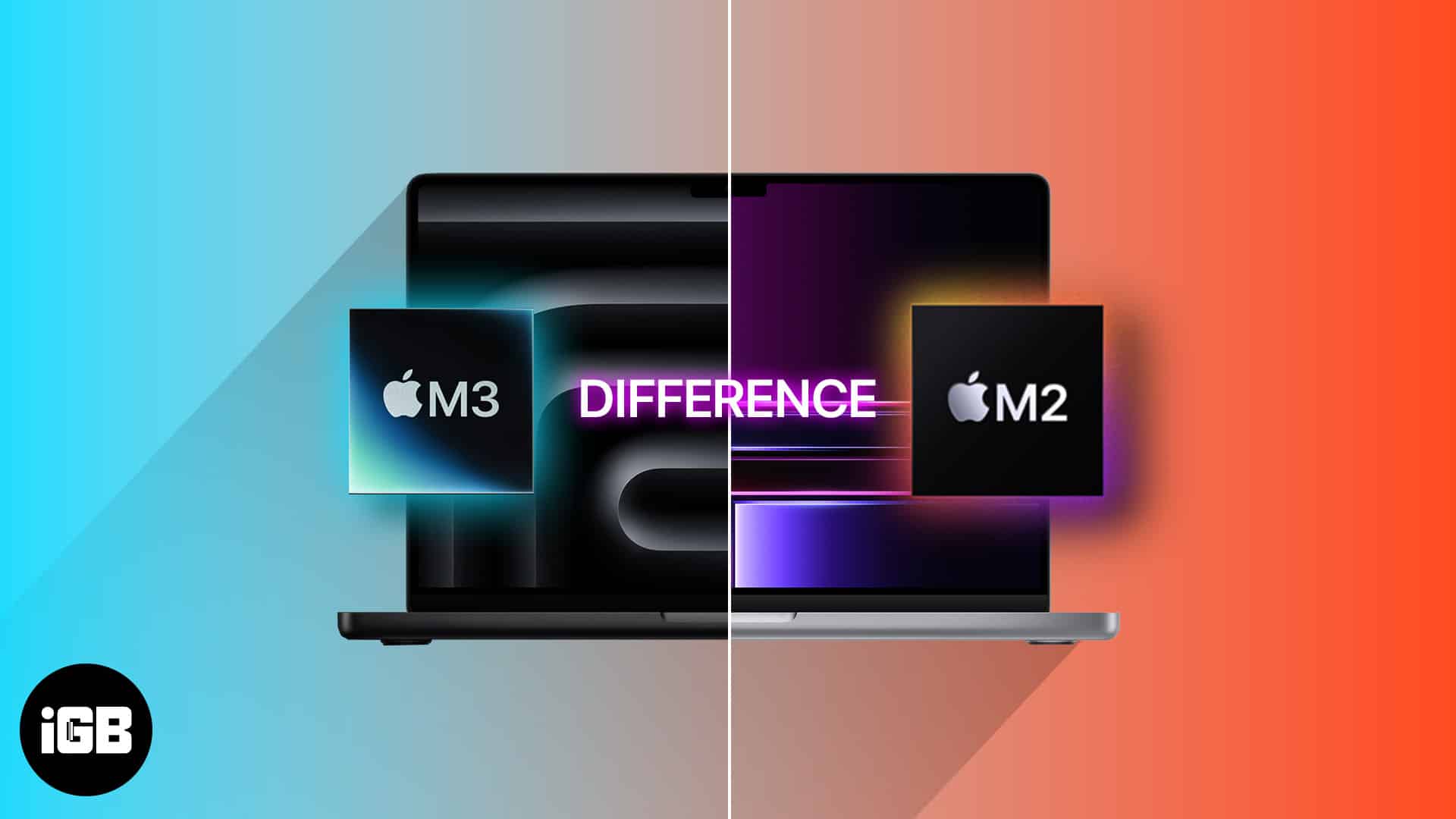
M3 vs. M2 MacBook Pro – Key Specs
Before getting into the details, here’s an overview of everything these 4 powerful Macs have to offer.
| Specifications | 14-inch M3 MacBook Pro | 14-inch M2 MacBook Pro | 16-inch M3 MacBook Pro | 16-inch M2 MacBook Pro |
| Starting price | $1,599 | $1,999 | $2,499 | $2,499 |
| Display and resolution | 14.2-inch 120Hz XDR 3456 x 2234 | 14.2-inch 120Hz XDR 3456 x 2234 | 16.2-inch 120HZ XDR 3456 x 2234 | 16.2-inch 120Hz XDR 3456 x 2234 |
| CPU Cores | M3 (8-core), M3 Pro (11/12-core), M3 Max (14/16-core) | M2 Pro (10/12-core) or M2 Max (12-core) | M3 Pro (12-core) or M3 Max (14/16-core) | M2 Pro (12-core) or M2 Max (12-core) |
| GPU Cores | M3 (10-core), M3 Pro (18-core) or M3 Max (30/40-core) | Apple M2 Pro (16/19-core) or M2 Max (30-core) | M3 Pro (18-core) or M3 Max (30/40-core) | M2 Pro (19-core) or M2 Max (38-core) |
| Unified Memory | M3 (8GB, 16GB, 24GB), M3 Pro (18GB, 36GB), M3 Max (36GB, 96GB) | 16GB, 32GB, 64GB, or 96GB | 18GB, 36GB (M3 Pro or M3 Max with 14-core CPU), 48GB (M3 Max with 16-core CPU), 64GB (M3 Max with 16-core CPU), 96GB (M3 Max with 14-core CPU), 128GB (M3 Max with 16-core CPU) | 16GB, 32GB, 64GB, or 96GB |
| Storage | M3 (up to 1TB) M3 Pro (up to 4TB), M3 Max (up to 8TB) | Up to 8TB | Up to 8TB | Up to 8TB |
| Ports | 2 x USB 4.0 with Thunderbolt 4 support, SDXC card slot, HDMI, MagSafe 3, 3.5mm jack | 3 x USB 4.0 with Thunderbolt 4 support, SDXC card slot, HDMI, MagSafe 3, 3.5mm jack | 3 x USB 4.0 with Thunderbolt 4 support, SDXC card slot, HDMI, MagSafe 3, 3.5mm jack | 3 x USB 4.0 with Thunderbolt 4 support, SDXC card slot, HDMI, MagSafe 3, 3.5mm jack |
| Power adapter | Type-C, 70W or 96W | Type-C, 67W or 96W | Type-C, 140W | Type-C, 140W |
| Colors | Silver, Space gray (M3), Space black (M3 Pro, M3 Max) | Space gray, Silver | Space gray, Silver | Space black, Silver |
| Other features | True Tone, Touch ID, 1080p Webcam, Wi-Fi 6E, Bluetooth 5.3 | True Tone, Touch ID, 1080p Webcam, Wi-Fi 6E, Bluetooth 5.3 | True Tone, Touch ID, 1080p Webcam, Wi-Fi 6E, Bluetooth 5.3 | True Tone, Touch ID, 1080p Webcam, Wi-Fi 6E, Bluetooth 5.3 |
Display, design, and build
The new 14-inch and 16-inch M3 MacBook Pro models still feature the same designs as the M1 MacBook Pro introduced in 2021. All the Pro models offer a sturdy, squared-off aluminum chassis that we’ve become accustomed to. The only difference is that the Space Grey color on the M3 Pro and M3 Max models of MacBook Pro is now replaced by a new Space Black color.
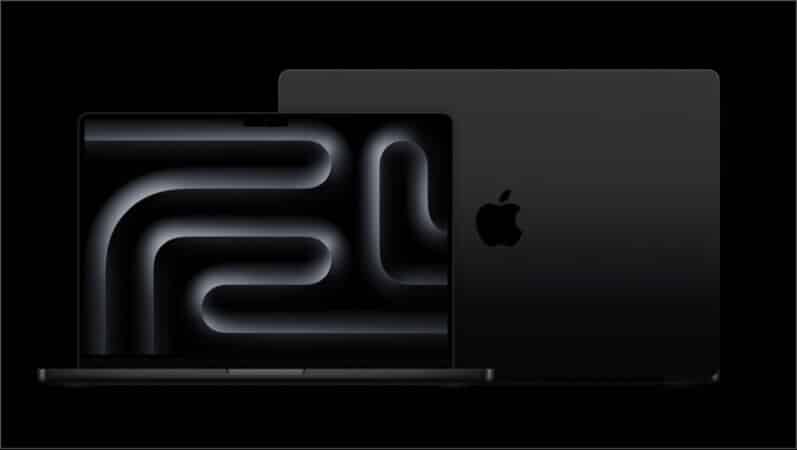
As for the display, all MacBook Pro models still feature a 120Hz Liquid Retina XDR display with thin bezels and a notch up top, which still doesn’t support Face ID. However, to Apple’s credit, the displays on the M3 models offer 600 nits of more brightness than the M2 models when viewing SDR content.
If we overlook the new Space Black colorway, 600 nits of added brightness, and the removal of a port on the right side, the new M3 MacBook Pros are virtually identical to their predecessors.
CPU and GPU performance
The most significant difference between the M3 and M2 MacBook Pros is their CPU and GPU performance. Thanks to the new 3nm architecture, the M3 series of chips offers significantly better CPU and GPU performance with a much lower power draw in comparison to Apple’s 5nm M2 series of chips.
The entry-level M3 chip found on the base 14-inch MacBook Pro, just like the M2, still features an 8-core CPU with four performance and four efficiency cores along with a 10-core GPU. While the core count hasn’t changed, the M3 chip packs 25 Billion transistors, up from 20 Billion on the M2 chip.
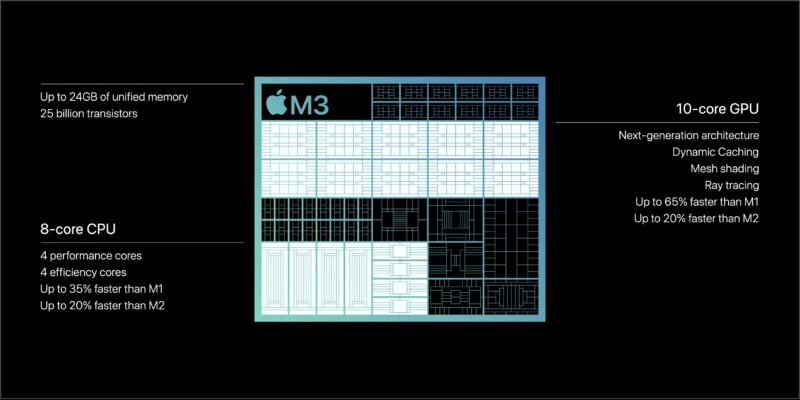
Things get a little complex when it comes to the M3 Pro. It features an 18-core GPU, 50GB/s slower Unified memory, and 37 Billion transistors instead of 40 Billion on the M2 Pro. And, while we still get a faster 12-core CPU, Apple has swapped two performance cores on the M3 Pro with efficiency cores.
This means the M3 Pro features six Performance and eight efficiency cores instead of eight Performance and four efficiency cores found on last year’s M2 Pro chipset.
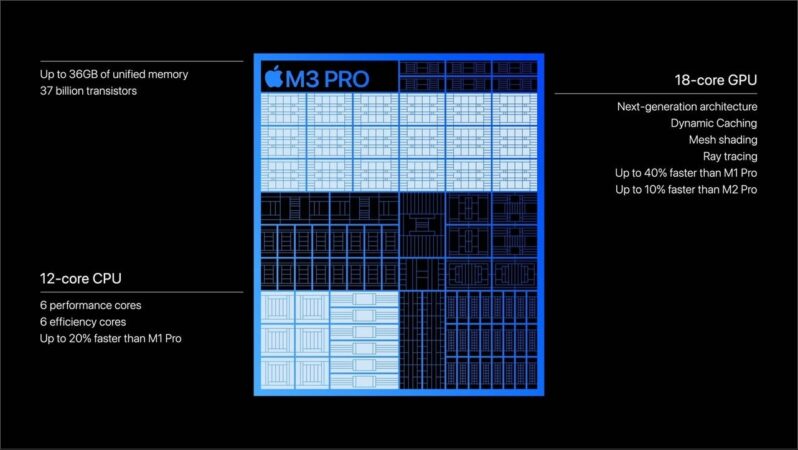
Thankfully, this is not the case with the M3 Max. It offers up to 16-core CPU and 40-core GPU instead of a 12-core CPU and 38-core GPU on the M2 Max. Besides that, the former features 98 Billion transistors and 128 GB of Unified Memory, up from the latter’s 67 Billion transistors and 96 GB of Unified Memory.
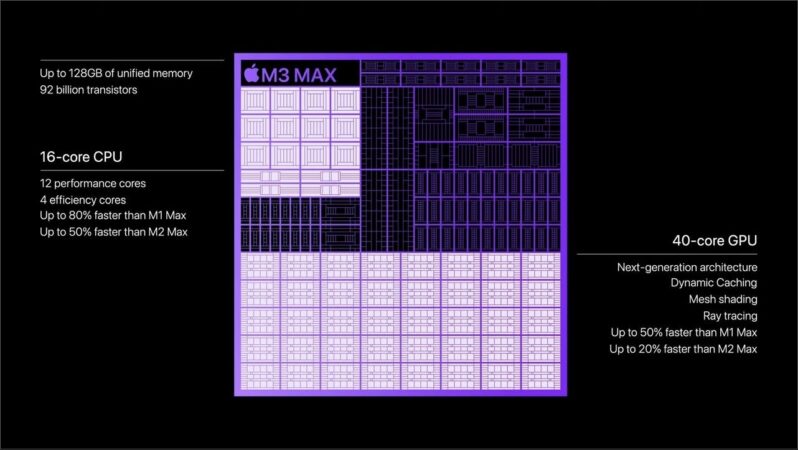
If we overlook all the improvements made to the CPU, the M3 MacBook Pros deliver a significant improvement in the GPU department compared to the M2 models. Along with a modest increase in the core count, the GPU on the M3 MacBook Pro now supports hardware-accelerated ray tracing for more realistic lighting and a new feature dubbed Dynamic Caching, that allows the Mac to allocate more memory to the GPU depending on the task.
Ports and connectivity
As far as the ports are concerned, all the 16-inch and 14-inch MacBook Pro models with either M3 Pro and M3 Max or M2 Pro and M2 Max have three Thunderbolt 4 ports with support for Displayport over USB-C. However, the 14-inch MacBook Pro with M3 only features two Thunderbolt 3/USB 4 ports.
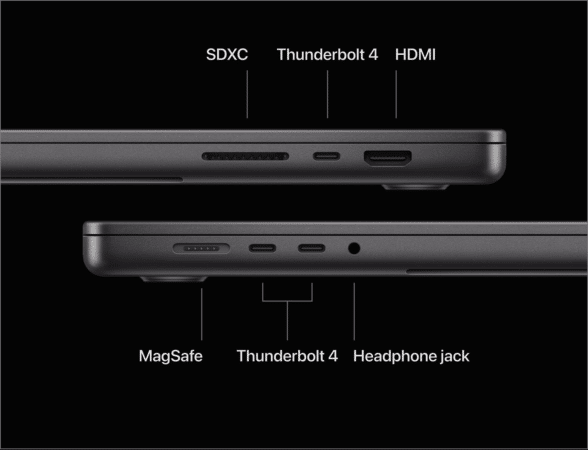
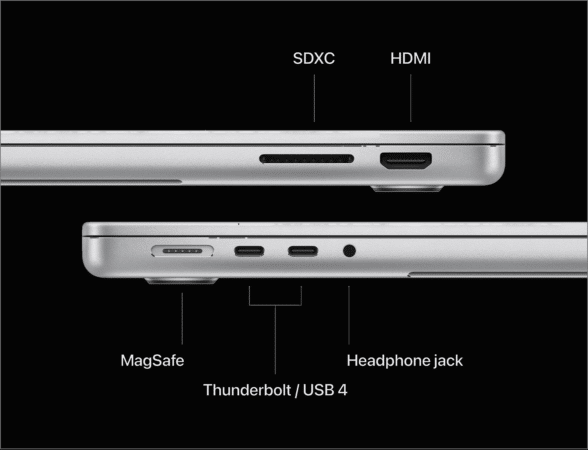
As usual, you can also hook up the M3 MacBook Pros with external displays. However, the number of displays and supported resolution depends on the chip you’ve opted for or if you’re using the HDMI or the Thunderbolt port.
The M3 Max and M2 Max can support up to four external displays, including three 6K 60Hz displays over Thunderbolt and a 4K 144Hz display over HDMI. Meanwhile, it can also support up to three displays, including two 6K 60Hz displays over Thunderbolt and one 8K 60Hz or 4K 240Hz display over HDMI.
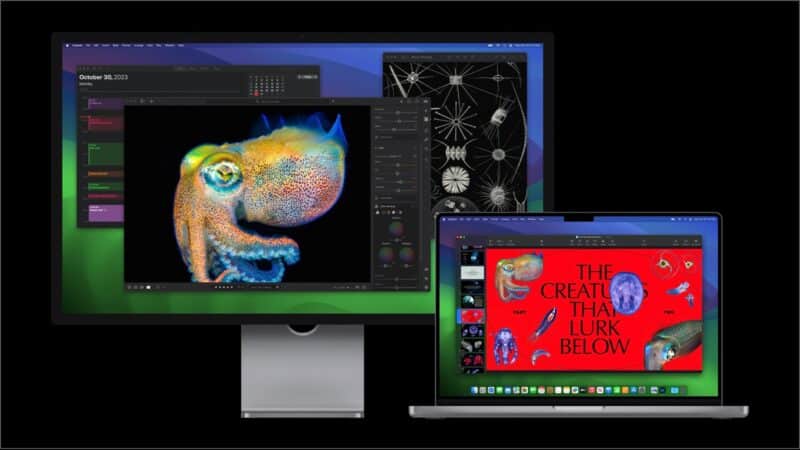
Similarly, the M3 Pro and M2 Pro support a total of two external displays. This includes two 6K 60Hz displays over Thunderbolt or one 6K 60Hz display over Thunderbolt paired with another 4K 144Hz display over HDMI. However, you can also opt to use a single 8K 60Hz or 4K 240Hz external display over HDMI.
Lastly, the 14-inch MacBook Pro with M3 only offers support for one external display running at either 6K 60Hz or 4K 120Hz over HDMI, an unfortunate yet common limitation shared by the M2 and M1 chips found on older Macs.
Charging and battery life
Both the M3 and M2 MacBook Pro are fairly power efficient and offer fast charging, up to 50 percent in 30 minutes, when using the 96W and 140 W power brick with the 14-inch and 16-inch models, respectively. However, thanks to the cutting-edge 3nm architecture, the M3 MacBook Pros can deliver an even better screen on time compared to the M2 MacBook Pros.
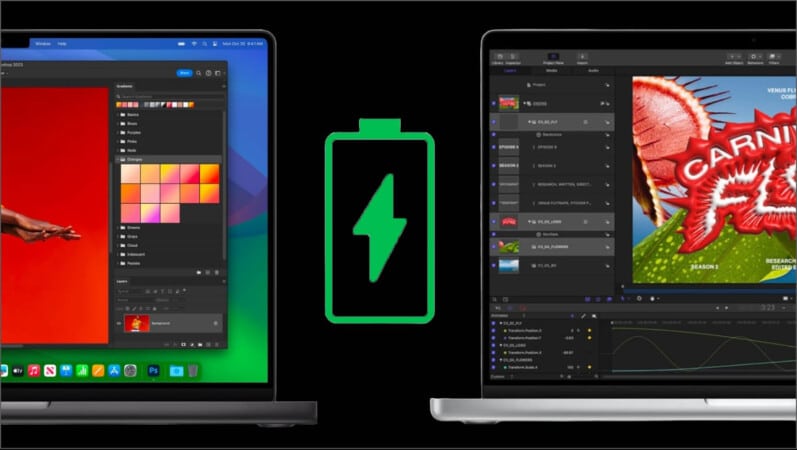
The entry-level 14-inch M3 MacBook Pro offers 22 hours of video playback on a single charge. Whereas a similarly specced 13-inch M2 MacBook Pro with TouchBar, the new model replaces, offers 17 hours on a single charge.
While not significant, the higher-end 14-inch MacBook Pro with the M3 Pro and M3 Max offers 18 hours of video playback on a single charge, up from 17 hours on the M2 Pro or M2 Max MacBook Pro.
Similarly, the 16-inch MacBook Pro with M3 Pro and M3 Max offer 22 hours of video playback on a single charge, up from 21 hours on the M2 Pro and Max.
| Model | Wireless web battery | Video playback | Included power adapter | Battery capacity |
|---|---|---|---|---|
| 14″ M3 MBP | 15 hours | 22 hours | 70W or 96W | 70Wh |
| 14″ M3 Pro or Max MBP | 12 hours | 18 hours | 70W or 96W | 70Wh |
| 14″ M2 Pro or Max MBP | 11 hours | 17 hours | 67W or 96W | 70Wh |
| 16″ M3 Pro or Max MBP | 15 hours | 22 hours | 140W | 100Wh |
| 16″ M2 Pro or Max MBP | 14 hours | 21 hours | 140W | 100Wh |
M3 vs. M2 MacBook Pro – Pricing and availability
Both the 14-inch and 16-inch M3 MacBook Pros are set to become available on November 7.
| Model | Price (starts at) |
| 14-inch M2 Pro MacBook Pro | $1,999 |
| 16-inch M2 Max MacBook Pro | $2,499 |
| 14-inch M3 MacBook Pro | $1,599 |
| 16-inch M2 MacBook Pro | $2,499 |
- The 14-inch model with M3 Pro starts at $1,999, and the one with M3 Max starts at $3199.
- Whereas the 16-inch model with M3 Pro starts at $2499, and the one with M3 Max starts at $3499.
- Last but not least, the 14-inch M3 model, replacing the 13-inch MacBook Pro M2, starts at $1,599.
While the M2 models still retain the same pricing as the 14 and 16-inch M3 MacBook Pros, Apple no longer sells those on its website. So, If you want to purchase the older models, you’ll have to rely on third-party retailers.
M3 vs. M2 MacBook Pro – Which one to choose?
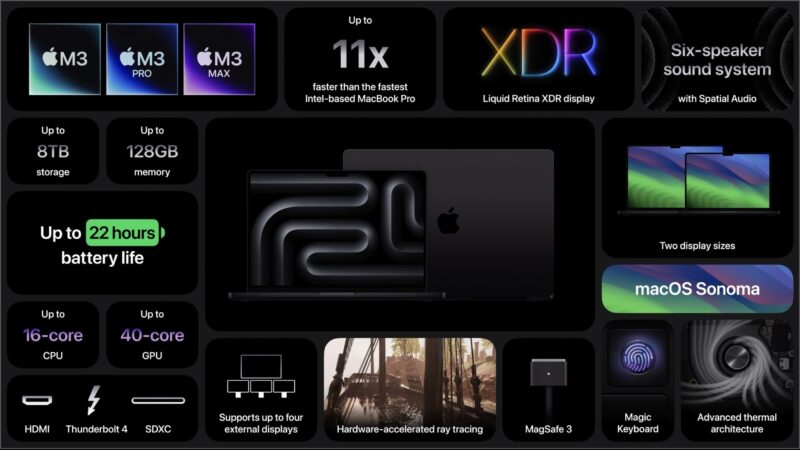
When choosing between the M3 MacBook Pro and the M2 MacBook Pro, it’s essential to consider the intended usage and the budget. The M3 MacBook Pro stands out as a powerhouse if you’re transitioning from an M1 or Intel-based MacBook Pro.
The huge improvement in CPU and GPU performance makes the M3 MacBook Pro more suitable for handling demanding tasks, such as video editing or 3D rendering, while offering a longer battery life.
However, if you own an M2 MacBook Pro, the M3 MacBook Pro might not offer a significant leap in performance, making the former a far better choice for handling somewhat lighter workflows or if you have a limited budget.
In my opinion, the M2 MacBook Pros are still capable of handling almost all demanding tasks, albeit a bit slower. Furthermore, the M2 MacBook Pro will likely receive a price drop as the newer model becomes widely available.
Also read:

